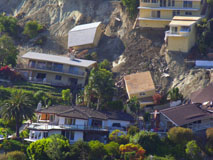Emergency Preparedness Plan
Protect Your Family with an Emergency Preparedness Plan
Protecting your family in an emergency is much easier to do when you plan ahead. This is why a good family disaster plan is crucial. To create your emergency preparedness plan, you will need to:

- Understand the emergency situations you may face
- Educate your family about the importance of a plan
- Create your plan
- Gather important contact and emergency service information
- Practice your family disaster plan
While no one expects to find themselves in an emergency situation, planning for the unexpected with an emergency preparedness plan can mean the difference between life or death. Unfortunately, many people balk at the idea of creating a family disaster plan, since they believe this indicates paranoia. You may never end up needing to use your plan, but it costs nothing to put one together, and you simply never know when you may need to put it in motion.
First, you should educate yourself about the types of disasters that you may encounter. House fires are a possibility no matter where you live, and some regions are prone to tornadoes, flooding, earthquakes, and other severe weather and emergency conditions. Know ahead of time what the risks are so that you can adequately prepare yourself and your family.
The next step in creating your family disaster plan is to sit down with your family members and talk about the importance of emergency planning. Make sure everyone, even young children, understand the dangers that may arise from severe weather situations, earthquakes, and fire. It's crucial that everyone understands their role in an emergency preparedness plan, and that family members cooperate to share the responsibility and work as a team should an emergency situation arise.
Once everyone understands the types of disasters that could occur, and the importance of a family disaster plan, designate two places to meet in case of emergency. One meeting spot will be in case of sudden emergency at your home, like a fire. Pick a place outside your home, for example across the street in front of a neighbor's house. Also pick a meeting place out of your neighborhood, in case you must evacuate or are away from home when a major emergency happens. Everyone should have the address and phone number of this meeting place.
If you have school-aged children, talk to your child's school and find out what their emergency action plan is and how to best incorporate it into your family's plan. For instance, find out how the school would handle a shooting, and come up with a plan for how you would be able to quickly find out if your child is okay. Discuss this plan with your child so they clearly understand their role in the event of an emergency while they are at school.
Make sure that each adult family member or older child understands how to use key safety equipment, like a fire extinguisher. Your family disaster plan should also include a list of important phone numbers for medical care, emergency response, law enforcement, and family and friends. Don't forget to plan for the care of your pets in an emergency as well; you may want to keep the vet's number on hand too, in case your pet is injured in a fire or other localized accident.
It's also important to pick a family member or friend as an out-of-state contact. This is because in a widespread emergency, some local phone lines may down in your area, making it easier to call long distance. This is important for maintaining contact with out of area relatives who inquire about your condition, and your contact person can serve as a liaison in case your local family members are separated in an emergency. Each family member should check in with the out-of-state contact person, who can keep loved ones informed about your safety and whereabouts.
You'll also want to include other ways of keeping in touch with family members as part of your emergency preparedness plan. An email notification list, contact with a friend or family member who will not likely be impacted by the same emergency, and registering on the American Red Cross Safe and Well Website are some ways to do this.
Finally, make sure you practice your family disaster plan by quizzing family members every 6 months or so, and having a refresher meeting to go over the important points of the emergency preparedness plan. Make sure all safety equipment is functioning properly, perform fire and emergency evacuation drills, and periodically replace supplies of emergency food (every 6 months) and water (every 3 months).
Photo courtesy of Angela Jell may not be copied, reproduced, or sold.
Return from Emergency Preparedness Plan to Family Life Today
Return to Life Organize It Home






